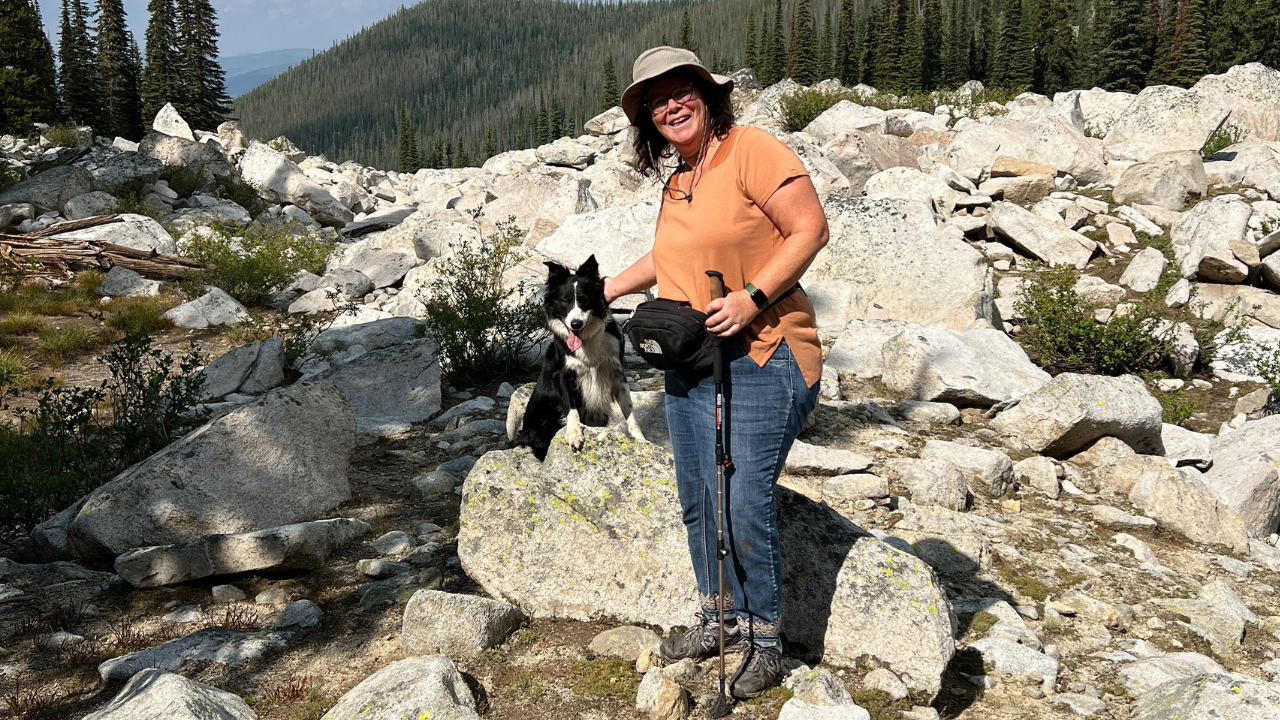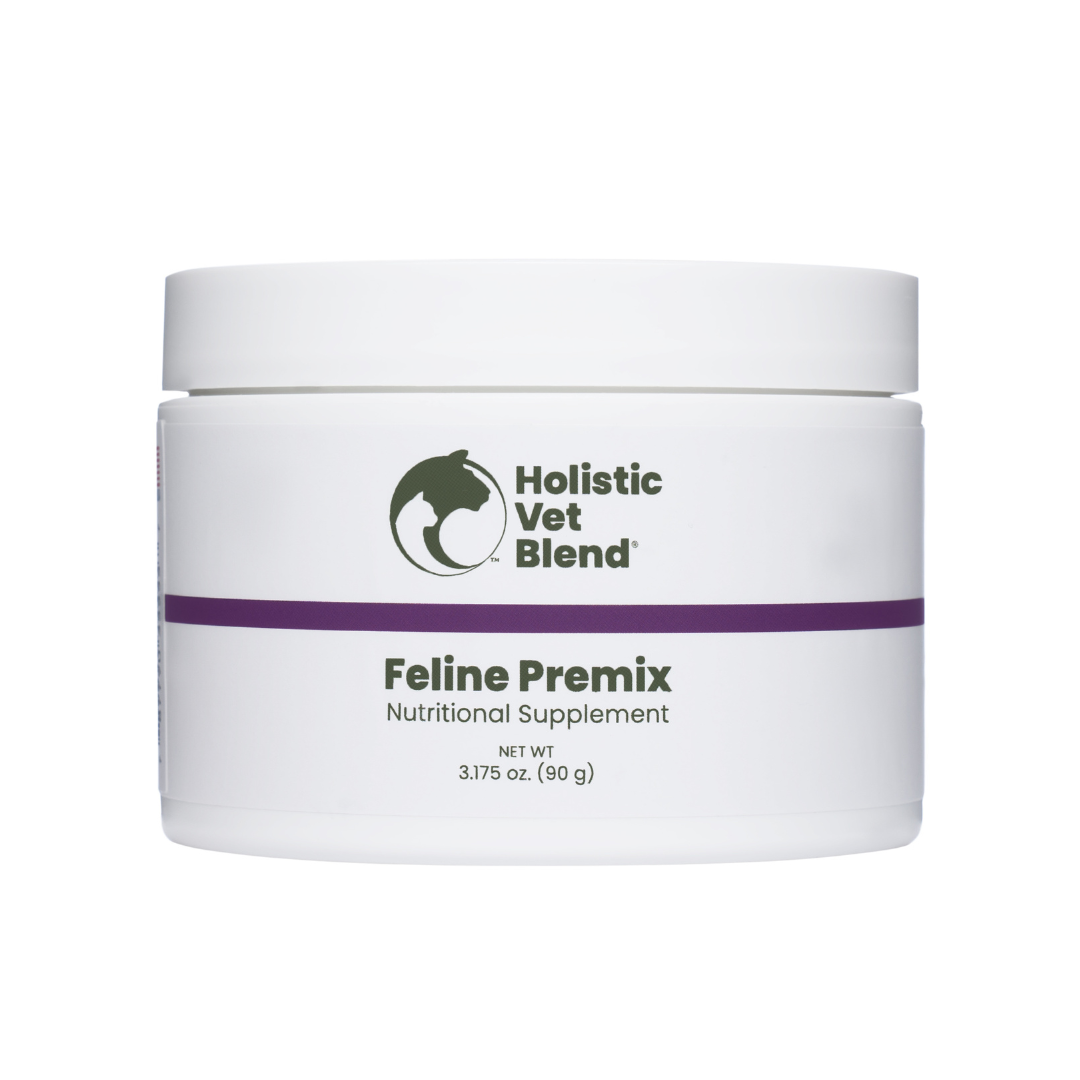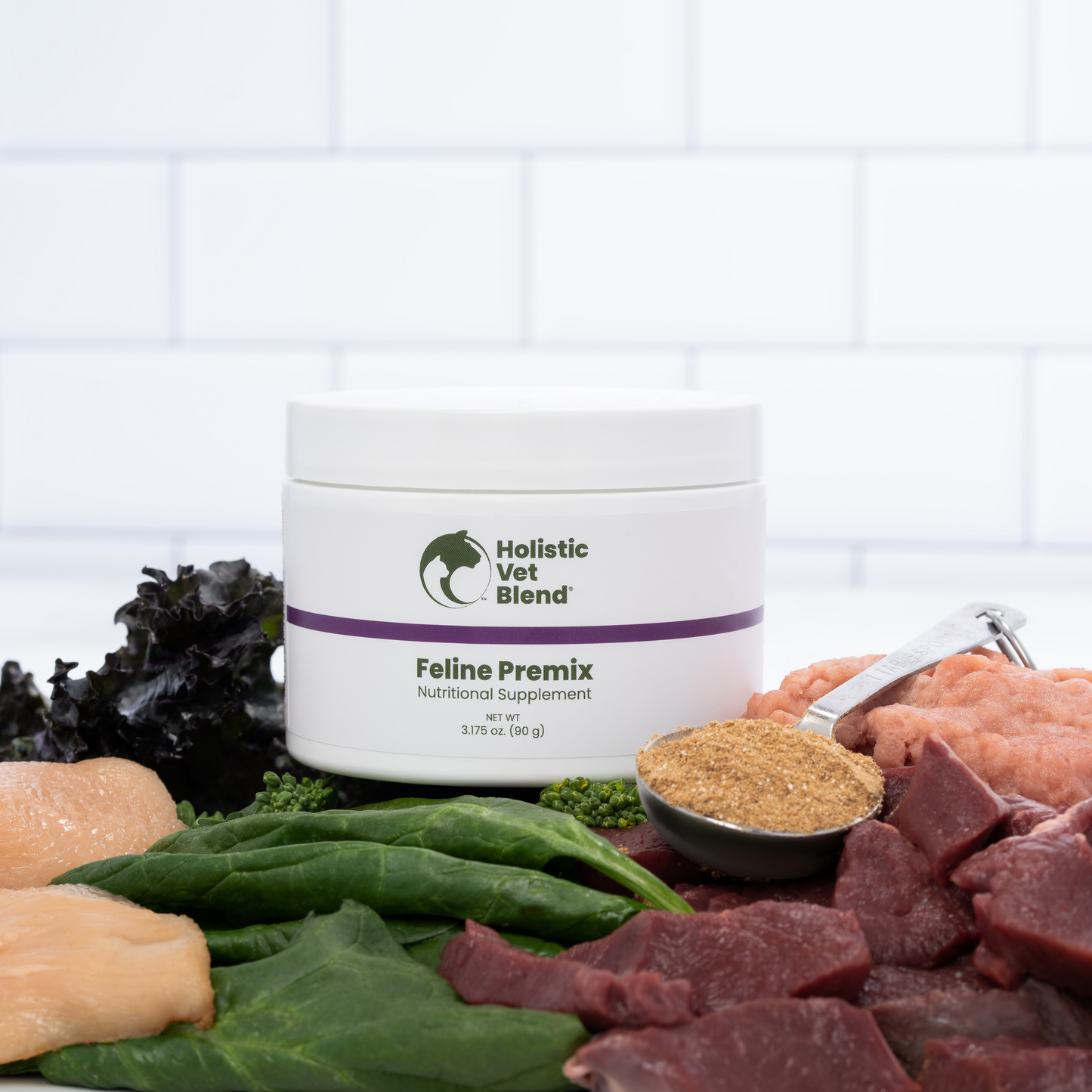
Key Highlights
- Excellent leash manners are important for hiking.
- Follow trail regulations and practice good trail etiquette
- Be prepared for weather conditions and hazards on the trail
- Pack essential gear for your dog's safety and comfort
- Take care of your dog's hydration and nutrition during the hike
Introduction
If you're a hiker and a dog owner, then you and your sidekick are likely destined to be great trail buddies. Hiking with dogs not only allows you to enjoy the great outdoors but also provides valuable exercise and enrichment for your canine companion. However, hiking with dogs requires some extra preparation and care to ensure a successful and enjoyable experience for both you and your four-legged friend. In this blog, we will provide you with essential tips for hiking successfully with your dog, including training, trail etiquette, safety considerations, and more. So, grab your leash and get ready for some pawsome adventures on the trails!

Essential Tips for Hiking Successfully With Your Dog
Before you embark on a hiking adventure with your dog, there are a few essential tips to keep in mind. First and foremost, your dog should be well-trained, especially when it comes to leash manners and obedience commands. This is important not only for the safety of your dog but also for the comfort and enjoyment of other hikers on the trail. Additionally, familiarize yourself with the trail systems in your area and choose trails that are suitable for hiking with dogs.
1. Mastering Leash Manners and Trail Etiquette

Proper leash manners and trail etiquette are essential for a successful hiking experience. If your dog is not good at heeling and is going into the brush they will be exposed to ticks and potentially a rattlesnake if you do not have good leash control. I like to keep my dog in the center of the trail as best I can so they do not end up with ticks. My poor Border Collie ended up with 3 ticks deep in her ear canal after one of our hikes in the early spring, despite my efforts to keep her safe. If there is Poison Oak in the area, and they brush into you can be exposed when you touch your dog.
Remember to yield the right of way to other hikers, horses, and bikes on the trail and be respectful of the trail rules and regulations.
Leave no trace by cleaning up after your dog and properly disposing of waste.
2. Ensuring Reliable Recall Commands

In addition to mastering leash manners, the most important command for a dog to obey is to have a reliable recall. The ability to call your dog back to you on command is essential for their safety, especially in situations where they may encounter wildlife or other potential dangers. Practice recall commands during training sessions and gradually increase the level of distractions to ensure that your dog responds reliably even in challenging situations. A well-trained recall command will give you peace of mind and allow your furry sidekick to enjoy off-leash adventures in designated areas where it's allowed.
3. Teaching the "Leave It" Command for Trail Safety
The "leave it" command is another valuable tool for ensuring trail safety for your dog. This command teaches your dog to resist the temptation of picking up or interacting with potentially dangerous objects or substances they may encounter on the trail, such as toxic plants or wildlife droppings. Teaching the "leave it" command takes time and consistency, but it can prevent your dog from ingesting harmful substances or getting into dangerous situations. Use positive reinforcement techniques and reward your dog when they successfully "leave it" to reinforce this important command.
4. Socializing Your Dog for Friendly Encounters

Socializing your dog is crucial for successful encounters with other hikers, dogs, and wildlife on the trail. Proper socialization helps your dog develop good manners, reduces the risk of aggressive behavior, and promotes positive interactions with other pets and people. Expose your dog to different environments, sounds, and experiences from a young age, and provide positive reinforcement when they behave appropriately during social interactions. It's also important to be mindful of other hikers and their comfort level around dogs. Always ask for permission before allowing your dog to approach other people or dogs and respect their boundaries.
Be prepared Ahead For What You Might Encounter
Before hitting the trail with your dog, it's essential to consider the weather and safety conditions. Extreme temperatures, such as excessive heat or cold, can pose risks to your dog's health. Be aware of signs of heat stroke and hypothermia and take appropriate measures to prevent these conditions. Additionally, ensure that your dog is up to date on vaccinations, flea, and tick prevention to protect them from common outdoor hazards. By taking these precautions, you can ensure a safe and enjoyable hiking experience for both you and your furry companion.
Is There Any Gear I Might Need?
- A light leash, avoid flexi leads as these are difficult to control a dog with under any circumstance.
- Water dispensers or bowls
- Identification on you and your dog
5. Recognizing Temperature Safe Zones for Hiking
Understanding temperature-safe zones is crucial for hiking with your dog, especially during hot weather. Dogs are more susceptible to heat stroke than humans due to their limited ability to regulate body temperature. Avoid hiking during the hottest part of the day and choose trails with shade or water sources for breaks. Monitor your dog closely for signs of overheating, such as excessive panting, drooling, or lethargy. If your dog shows any of these signs, find a cool, shaded area, provide water, and consider ending the hike to prevent heat-related illnesses.
6. Performing the Ground Temperature Check
Checking the ground temperature before hiking is essential to prevent paw pad injuries. Dogs' paws are sensitive to extreme temperatures, and hot pavement or rocky terrain can cause burns or cuts. Place the back of your hand on the ground for a few seconds to check if it's too hot for your dog's paws. If it's too hot for your hand, it's too hot for your dog's paws. Consider using booties or paw wax to protect your dog's paws on hot or rough surfaces. Regularly inspect your dog's paws during breaks and after the hike for any signs of injury or discomfort.
7. Planning for Proper Hydration and Breaks
Proper hydration is crucial for your dog's well-being during a hike. Carry enough water for both you and your dog, and offer frequent water breaks, especially on hot days or strenuous hikes. Dogs should consume about 0.5 to 1.0 ounces of water per pound of body weight per day. However, this can vary depending on the dog's size, activity level, and weather conditions. These are general guidelines, so it is important to be watchful and offer water often, especially on hot days. Avoid allowing your dog to drink from natural water sources like lakes or streams to prevent the risk of waterborne pathogens. Instead, carry fresh water and a collapsible dish for your dog's hydration needs.

Water Needs
Proper hydration is crucial for your dog’s health during a hike. Here’s a guideline for how much water to bring based on your dog’s size:
- Small Dogs (up to 20 lbs): 1-2 cups of water per hour of hiking.
- Medium Dogs (20-50 lbs): 2-4 cups of water per hour of hiking.
- Large Dogs (50 lbs and up): 4-8 cups of water per hour of hiking.
Carry a collapsible water bowl for easy access and offer water frequently.
8. Using Cooling Products for Heat Regulation
Shade is your friend on hot days. Be sure to take water breaks often and allow your dog to cool off in the shade, as the trail radiates a lot of heat.
Identifying Dogs Not Suited for Hiking Adventures
While hiking can be a wonderful activity for most dogs, it's important to recognize that some dogs may not be suited for hiking adventures. Brachycephalic breeds, such as Bulldogs and Pugs, are more prone to respiratory issues and heat intolerance, making hiking challenging for them. Senior dogs or dogs with underlying health issues such as laryngeal paralysis may also have limitations that hinder their ability to hike even short distances. Consult with your veterinarian to assess your dog's fitness level and determine if hiking is appropriate for them.
9. Understanding Limitations of Brachycephalic Breeds
Brachycephalic breeds, characterized by their short snouts and flat faces, have unique limitations when it comes to hiking. These breeds, such as Bulldogs, French Bulldogs, and Pugs, are more prone to respiratory issues and heat intolerance due to their compromised airways. Their ability to regulate body temperature is also impaired, making them more susceptible to heat stroke. It's important to be mindful of these limitations and choose hiking trails that are suitable for their breed and physical abilities. Avoid hiking during hot weather or opt for shorter, less strenuous hikes to prevent respiratory distress and overheating.

10. Assessing Senior Dogs' Fitness for Trails
Senior dogs may have limitations that affect their ability to hike long distances or tackle challenging terrains. Factors such as arthritis, joint pain, or age-related conditions can impact their mobility and stamina. Before taking your senior dog on a hike, consult with your veterinarian to assess their fitness level and determine the appropriate intensity and duration of the hike. Consider shorter, leisurely hikes that cater to their needs and provide plenty of breaks for rest and hydration. Monitoring your senior dog closely during the hike and adjusting the activity level as needed will ensure their safety and enjoyment on the trails.

11. Recognizing Health Issues That Limit Hiking Ability
Recognizing health issues that limit hiking ability in dogs is crucial. Prior vet clearance is essential, focusing on conditions like arthritis or heart problems. Keep an eye out for signs such as excessive panting, reluctance to move, or limping. Consult your veterinarian if your dog shows any discomfort during or after hikes, as their well-being is paramount. Understanding your furry sidekick's limitations is key to ensuring a safe and enjoyable hiking experience for both of you.
Navigating Hazards on the Trail
Hiking trails are filled with potential hazards for dogs. From sharp rocks and thorns to poisonous plants and wildlife encounters, it's crucial to navigate these hazards to keep your furry companion safe.
One common hazard on the trail is foxtails. These barbed seedpods can easily attach to your dog's fur and penetrate their skin, leading to serious health issues. It's important to avoid areas with grasses that have foxtails and regularly check your dog for any signs of foxtail attachment. If you discover a foxtail, remove it immediately with tweezers to prevent further complications.
Other hazards to be aware of include heatstroke, tick bites, and encounters with rattlesnakes. By being proactive and taking preventative measures, such as providing ample shade, using tick prevention products, and staying on designated trails, you can ensure a safer hiking experience for both you and your dog.

12. Protecting Against Foxtails and Other Plant Dangers
When hiking with dogs, safeguard against potential risks like foxtails and plant hazards. Check your furry companion for any visible signs of foxtails, focusing on paws, ears, and coat after each trail adventure. Keep your dog away from poison oak and other poisonous plants. Leash your dog in sensitive areas to prevent unintended contact with harmful flora. Understanding plant dangers and being vigilant during hikes can help ensure a safe and enjoyable outdoor experience for both you and your pet.
13. Awareness and Prevention of Rattlesnake Encounters
When hiking with dogs, it's crucial to be aware of potential rattlesnake encounters. Training your furry sidekick to avoid unfamiliar objects and stick to the trail is a good idea. Keeping your dog on a leash can also prevent unwanted snake interactions. Educate yourself about snake habitats and behavior to steer clear of danger. In case of a snake bite, seek immediate veterinary assistance to ensure your pet's safety.
14. Preventing Tick Bites and Lyme Disease
Regularly check your furry sidekick for ticks after hikes. Utilizing tweezers, carefully remove any embedded ticks to prevent Lyme disease transmission. Choose tick-prevention products recommended by your vet. Avoid tall grass and stick to the center of trails to minimize exposure. Consider a vet check if you notice symptoms like head shaking, excessive sneezing, or lethargy post-hike. Tick prevention is the best defense; stay vigilant to ensure your pup's health and safety on the trails.
15. Recognizing and Treating Heatstroke
Recognizing the signs of heatstroke in your furry sidekick is a good idea while hiking. Symptoms may include excessive panting, lethargy, and collapsing. Waterborne pathogens can also pose a risk to your pet's health. If you suspect heat stroke, move to a cooler area, offer small sips of water, and wet their paws and head. Contact a vet immediately for assistance. Time is crucial when dealing with heatstroke in dogs. Understanding this condition is vital for all pet owners.
16. Caring for Your Dog's Paw Pad Health
Regularly check your dog's paw pads for any cuts, scrapes, or debris after hikes. Use pet-safe moisturizers to keep them hydrated and prevent cracking. Trim excess hair around the paws to avoid matting and discomfort. Watch out for limping or licking, indicating potential issues. Consider using protective booties in rough terrain. Proper paw care ensures your furry companion's comfort and prevents injuries on the trails. Prioritize your dog's paw health to enhance their hiking experience. Stay vigilant and proactive in maintaining those paws!
Conclusion
In conclusion, successful hiking with your dog requires preparation, training, and awareness of potential hazards. By mastering leash manners, ensuring recall commands, and teaching safety commands, you can enhance the experience for both you and your furry companion. Understanding your dog's limitations and health considerations is crucial, along with navigating trail hazards and prioritizing hydration and safety. Remember to plan for weather conditions and follow trail etiquette. With proper preparation and care, you can enjoy memorable hiking adventures with your loyal hiking buddy.
Preparing Your Pup for the Trail
Preparing your pup for the trail involves considering their usual gear, vet recommendations, and endurance level. Ensuring that your dog has the appropriate gear, such as a properly fitting leash and harness, is essential for their safety and comfort during the hike. Additionally, consulting with your vet to ensure your dog is physically ready for hiking and discussing any specific recommendations or precautions is crucial. Finally, gradually increasing your dog's endurance through regular exercise and training hikes will help prepare them for longer and more challenging trails.
Food and Water Planning
Food and water planning is essential for a successful hiking trip with your dog. During backpacking trips, your dog will require more fuel and hydration than usual, so it's important to pack extra food and fresh water. Be mindful of the risks associated with waterborne pathogens. Leptospirosis can be contracted in free standing water and Blue Green Algae in some areas in the heat of summer and is very deadly should your thirsty dog partake.
Additionally, monitor your dog's hydration levels and offer water frequently, especially on hot days. Remember, if you're thirsty, chances are your dog is too.
Frequently Asked Questions
Can My Dog Wear a Backpack?
What is the Best Way to Build My Dog's Endurance for Hiking?
Building your dog's endurance for hiking involves gradually increasing their exercise and training hikes. Consult with your vet for specific recommendations based on your dog's health and physical abilities. Incorporate regular walks, obedience training, and longer hikes to gradually build up their endurance. Start with shorter hikes and gradually increase the time and distance to match the level of hiking you plan to do in the future. Ensure your dog is equipped with the usual gear, including a properly fitting leash and harness, and consider incorporating obedience training to ensure a well-behaved hiking companion. Start and end your training hikes at the trailhead to simulate the actual hiking experience.
How Often Should I Offer Water to My Dog During a Hike?
Offer water to your dog frequently during a hike to prevent dehydration. Dogs need to stay hydrated, especially during physically demanding activities like hiking. Take breaks at temperature-safe zones to provide water for your dog's hydration needs. Be mindful of waterborne pathogens and ensure the water you offer is clean and safe to drink. Monitor your dog's hydration levels and offer water if they appear thirsty or tired.
Can All Dogs Wear Booties for Paw Protection, or Do Some Require Special Types?
Not all dogs require booties for paw protection, but they can be beneficial for certain breeds or hiking conditions. Some dogs may require special types of booties, such as those designed for extreme weather or specific terrain. It's important to consider your dog's individual needs and consult with a hiker or backpacker to determine the best type of booties for your dog's paw protection.














